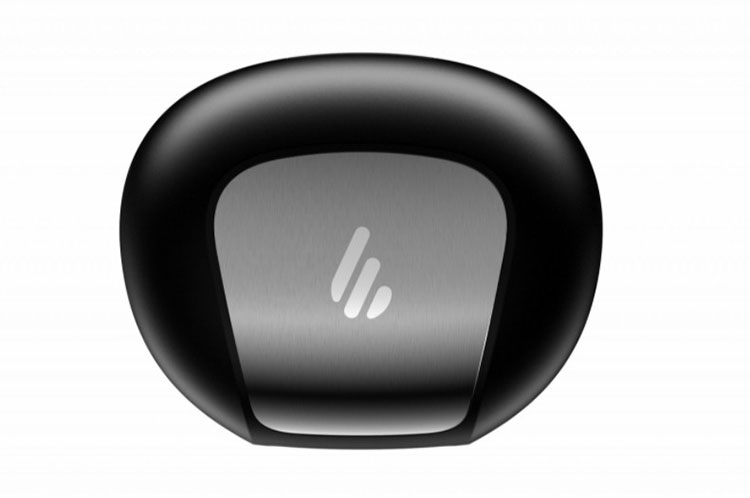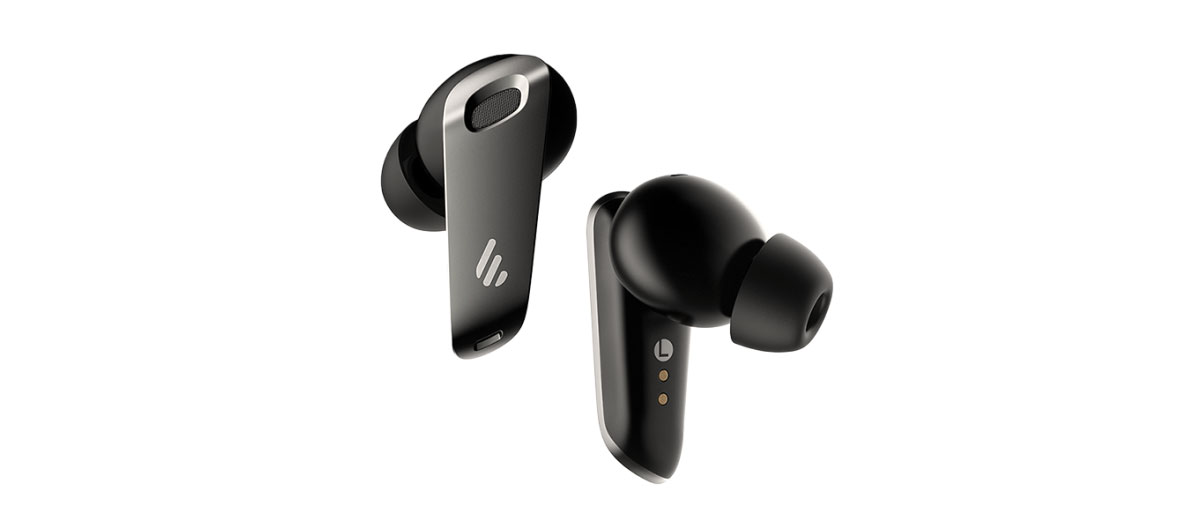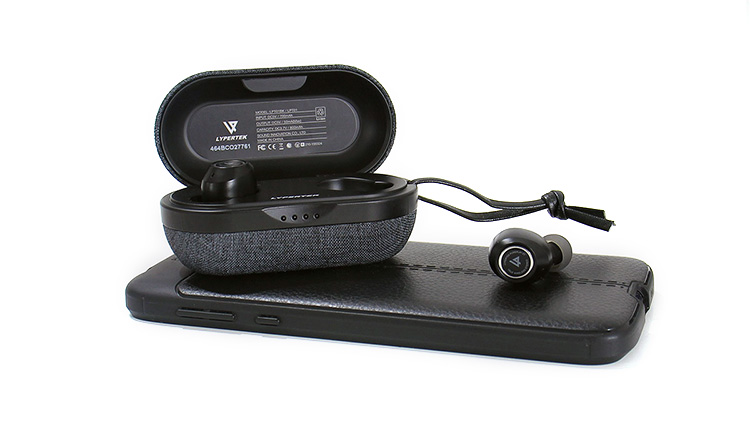Sound Impressions
Summary
On first listening impressions of the NeoBuds Pro you get a very slight U-shape but quite a balanced sound as well with a punchy bassline especially when the dynamic DSP mode is engaged.
My NeoBuds Pro set came with that mode activated. You also get a smooth midrange response while on top, the highs seem very vibrant with a good amount of presence.
The tone sweep test took these to a very audible 24Hz, recessed at 22Hz, and barely audible at 18Hz. To me, that is rather a decent amount of bass extension and enough to hear those low notes without going into wasteful subsonic frequencies.
Midrange response seems very flat with just one peak upper regions close to 7kHz, but again, the midrange was almost completely flat and well transitioned from the bass up to that peak which is actually quite good and explains away the smoothness and even frequency distribution in that frequency range.
I was also surprised to find it to be a noiseless TWS in the high-frequency range. I took the NeoBuds Pro to 15kHz audibly and even further out with no noise whatsoever.
I’ve done lots of TWS reviews and found that almost every model in the past had some sort of a very high noise floor in this region with a couple of exceptions and the Edifier NeoBuds Pro was just thrown into that exception list.
Bass
The NeoBuds Pro has a particular characteristic in the bass response and the only way I could describe it is to imagine a good floor standing speaker with good bass in where somehow the bass seems impactful but the impact seems to be further out front somewhere.
That is the sensation I’m getting here. The bass extension is rather deep but it always remains centered and in front of the listener. All the detail is there and you could distinguish every note. The detail in the bass is sometimes overlooked but the NeoBuds seem to perform extremely well in this aspect.
A good example I can give is that while playing the song “Sucker” off Post Modern Jukebox, right around the center of the song you could clearly hear the bass strings being over-exerted and you could hear the bass amp stressing.
You could also hear the bass speaker being pushed to the limit and actually hear the over-excursion. That’s like the extra little crunch you get from the sprinkles eating ice cream right there.
Midrange
The NeoBuds Pro midrange is nice and smooth and actually has a silky character that is pleasant to listen to. The midrange seems tall, with lots of depth with a fairly realistic tone especially while using a high-end codec.
There is a lot of detail there but some micro details are still somewhat veiled especially very small nuances. But my main nitpick area would be that 7k area where at times some harshness comes through if you get carried away with the volume and have them up at 100% volume.
But in general, there is a lack of harshness and absence of veil in the NeoBuds Pro lower and middle parts of the midrange and the negative traits only show up at the very high midrange area.
They do veer little from a natural tonality in general and I consider the midrange a rather good virtue of the NeoBuds Pro along with the deep, punchy, and detailed bass response.
Treble
The NeoBuds Pro treble response actually has some decent high-frequency extension as well and has a nice amount of presence. You don’t have to focus much to hear them because you cannot miss them but not mistake them for aggressively forward though.
They do a good job at producing some fairly realistic tones and seem to sound rather airy but are not feather-light because the NeoBuds Pro highs have some weight behind them.
High hats, quick and sharp notes sound just like they should, clean and crisp but I think there is a 7k peak influence in those highs because sometimes harshness can be heard on high-frequency notes especially those of long duration, not on for example fast cymbal tapping, however.
But other than that, the NeoBuds Pro high-frequency section is well represented, balanced, and noise-free if you compare them to last year’s TWS models where most presented not only high-frequency harshness but lots of electrical noise. The NeoBuds Pro is almost uniquely distinguished to me for their rather noiseless top end.
Soundstage
The NeoBuds Pro has a deep and tall presentation while the lateral presentation remains a bit held back. The width is realistic and not too out there or too wide bit it seems closed in character in that aspect and comparing them to other wider sounding sets and some good sound staging IEMs. My only wish here would have been a bit more width.
It seems most elements in recordings come forth from out front somewhere especially around the midrange area while they seem to also present a height aspect on each element. Usually, this height aspect reflects mostly on wind instruments and vocals.
Imaging is rather precise and a well-recorded panning effect can show off the NeoBuds Pro’s decent ability to utilize left to right sides effectively to create a good sense of positioning.

Wireless Performance
Pairing
That first initial NeoBuds Pro pairing is a tricky one because you have to time it just right. The button inside the charging cradle must be pressed while the LED is in scanning status. If not, the LED becomes dormant and you have to repeat the process.
Once the initial pairing is done synchronization takes place rather fast and you don’t have to do much after that. All you have to do is open the NeoBuds Pro cradle top and the pairing connection between the two devices begins.
Stability and Range
I never got dropouts while using the NeoBuds Pro so long as I remained within the transmission range of the source so I would say stability is very good. I was actually able to walk around most parts of my home with no dropouts. My home is the average-sized 3 and 2.
The long-range reception was not too bad either. I was able to walk a little over forty feet away from the transmission source and dropouts only occurred at over the 40-foot mark.
One peculiar aspect I found with the NeoBuds Pro was that I did get dropouts every time I approached my metallic screen door so they seem to have a jealous streak and dislike sharing signals with other large nearby metallic objects. This happened to me mostly with my Asus BT transmitter and not so much with my BTA30.
Latency
Latency is something that is important in certain cases like movie watching and gaming. However, the NeoBuds Pro in the stock form actually does not do too well in this category. You could obviously tell the timing is off.
However, the NeoBuds Pro has a feature called gaming mode and once this feature is activated then latency is almost nonexistent. It works quite well and fixes the synchronicity while watching movies or video with speech.
Select Comparisons
Lypertek PurePlay Z3 2.0
$99
Technical
There are so many TWS options nowadays that a lot of buyers often get confused as to what particular model to buy. You honestly cannot go wrong with a Lypertek TWS. They make budget models that usually sound like the more expensive models.
They make single dynamic driver models and the S7 3 driver hybrid. The PurePlay Z3 2.0 uses a single Graphene driver in a plastic shell, a cloth-covered cradle that is never cold to the touch, and a couple of other interesting design implementations like a push-button feature instead of touch control.
Design
At times I really appreciate more so the push-button design and sometimes prefer it to a touch control system that at times becomes quirky and just refuses to work if you don’t time the touch sequence and speed of the tap just right. The push-button design however works every time.
While the S3 has the advantage of running on a BT 5.2 protocol it only runs off aptX, AAC, and SBC compared to the NeoBuds Pro LDAC capability so it sort of takes a hit in sound quality.
Performance
If you run both of these models on an aptX codec transmission to make it an even fight the Lypertek set might pull upfront by a very small margin mostly because of the neutral frequency response curve and the wider soundstage although imaging precision might be best on the NeoBuds Pro.
The NeoBuds Pro certainly performs better and has a bit more punch and a larger perceived speaker-like bass presentation. The S3 midrange has a peak at around 3k so each set seems to have its own peaky areas.
The 3k peak on the PurePlay gives them more forwardness in the midrange but in reality if you consider all other frequencies the S3 seems to have the flattest frequency response of the two and seems to be the more neutral sounding.
Shanling MTW300
$129
Technical
You could consider the other two in this lineup to be rather large models because the Shanling MTW300 has that going for them. Each earbud has touch controls but is still just over half the size of the other two.
This particular TWS also uses a single 6mm carbon nanotube dynamic driver behind a Qualcomm QCC3040 BT 5.2 chip with a class A/B amplifier section, aptX capability plus AAC, and SBC but there are no high-end codec capabilities. Here, the NeoBuds Pro reigns supreme with LDAC.
Design
The MTW300 shells are very small and lightweight however although the cradle is of small stature as well it certainly is the heaviest of the pack. The quality of the cradle construction is however undeniably good.
The shells are plastic but the cradle is a hunk of steel, to say the least, and its shape resembles a river lava rock with a similar grey color. One positive aspect is that it also has no sharp edges as well. It seems designers are keeping this in mind. An object with sharp edges inside your pocket could get bothersome sometimes and poke you in the wrong places.
Performance
The MTW300 contrasts the other TWS models, particularly in sound quality. Not to say that one is better than the other but my preference tuning right now would probably be on the NeoBuds Pro but you might like the softer-natured character of the MTW300.
Both sets have a somewhat U shape that is not too far from neutral but the MTW300 has a smoother character. Unfortunately, it also has some noise up in the top frequency area plus their codec capability can only go up to aptX.
I personally think the MTW300 is a set built with quality in mind and has the smallest earbuds and perhaps the most comfortable earbuds of the group but the big question is, would you trade LDAC capability for those features? That is your decision and yours to make alone.
Our Verdict
When it comes to the Edifier NeoBuds Pro, LDAC made the difference here between being an ordinary set and offering something worthwhile in the vast sea that is today’s modern TWS market.
I like the construction of the cradle and the LED UFO effect plus the earbuds are comfortable and always stay put with a minimum amount of effort and fiddling around. I even liked the anti-bacterial tips. My only con was the touch control and the way it at times did not respond to my commands.
But I rarely use touch controls anyway and in general, when I buy a device that produces sound I look for sound quality first and comfort second. The NeoBuds Pro on LDAC and with its dual-driver setup outperforms most TWS models I’ve heard up to now and especially in this price range and do so in a very comfortable manner.
Edifier NeoBuds Pro Technical Specifications
- Bluetooth Version 0
- Audio Codecs LDAC, LHDC, AAC, SBC
- Driver unit Balanced Armature + Dynamic Driver
- Playback time ANC on about 5 Hours
- ANC off about 6 Hours
- Charging time About 1 Hour (Ear Buds)
- About 1 Hour (Charging Case)
- Frequency Response 20 Hz to 40 kHz
- Sensitivity 92 +/- 3 decibels SPL A-weighted
- Impedance 24 Ohms
- Charging port USB Type C




